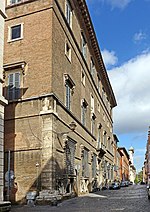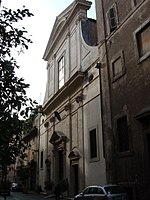San Giovanni dei Fiorentini
16th-century Roman Catholic church buildings in ItalyAlessandro Galilei buildingsBaroque architecture in RomeBasilica churches in RomeCarlo Maderno buildings ... and 7 more
Churches of Rome (rione Ponte)Francesco Borromini buildingsJacopo Sansovino buildingsNational churches in RomePietro da Cortona buildingsReligious buildings and structures completed in 1734Titular churches

The Basilica of San Giovanni dei Fiorentini ("Saint John of the Florentines") is a minor basilica and a titular church in the Ponte rione of Rome, Italy. Dedicated to St. John the Baptist, the protector of Florence, the new church for the Florentine community in Rome was started in the 16th century and completed in the early 18th, and is the national church of Florence in Rome. It was lavishly decorated with art over the 16th and 17th centuries, with most commissions going to Florentine artists.
Excerpt from the Wikipedia article San Giovanni dei Fiorentini (License: CC BY-SA 3.0, Authors, Images).San Giovanni dei Fiorentini
Piazza dell'Oro, Rome Municipio Roma I
Geographical coordinates (GPS) Address Nearby Places Show on map
Geographical coordinates (GPS)
| Latitude | Longitude |
|---|---|
| N 41.8997 ° | E 12.465 ° |
Address
Piazza dell'Oro
Piazza dell'Oro
00193 Rome, Municipio Roma I
Lazio, Italy
Open on Google Maps











